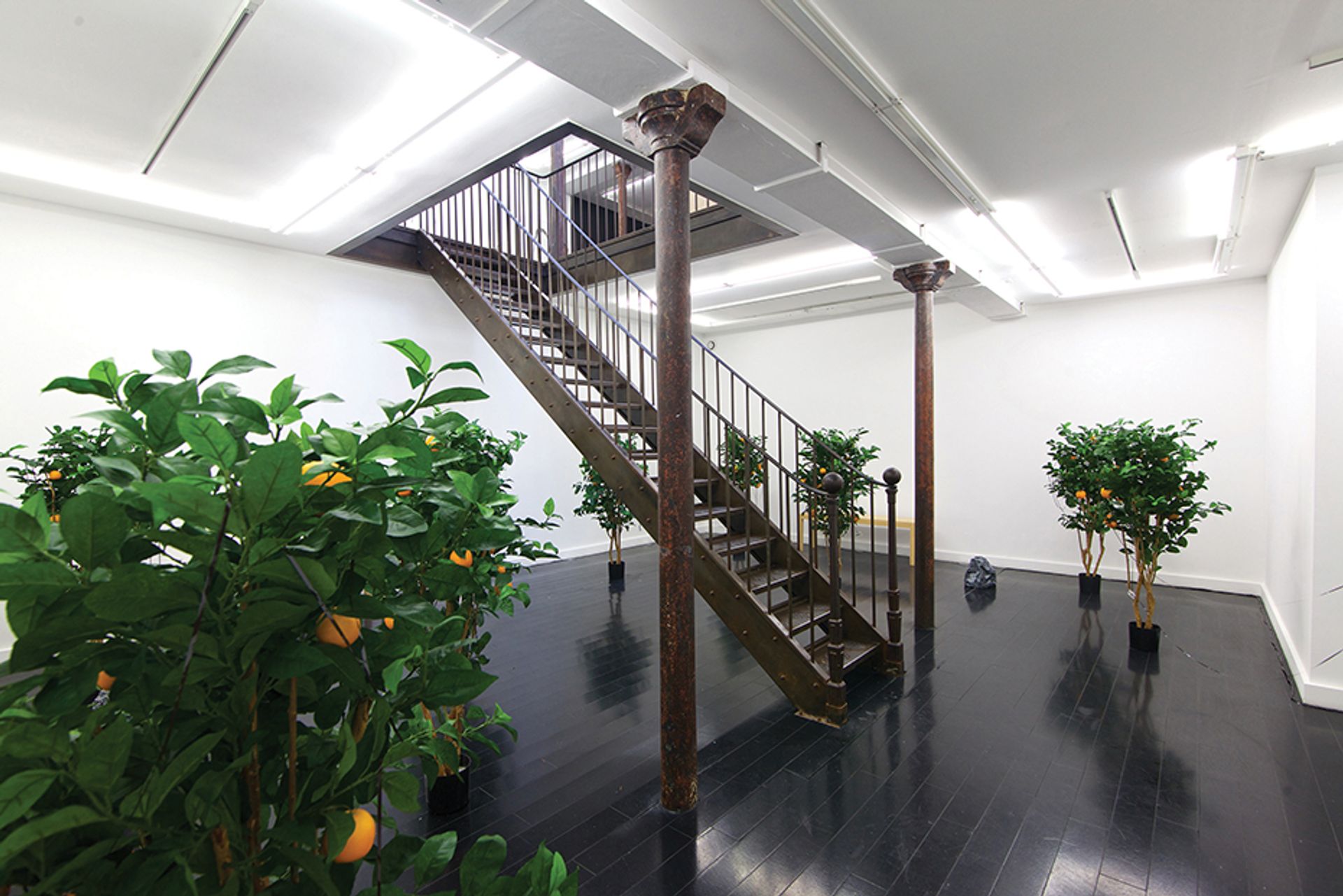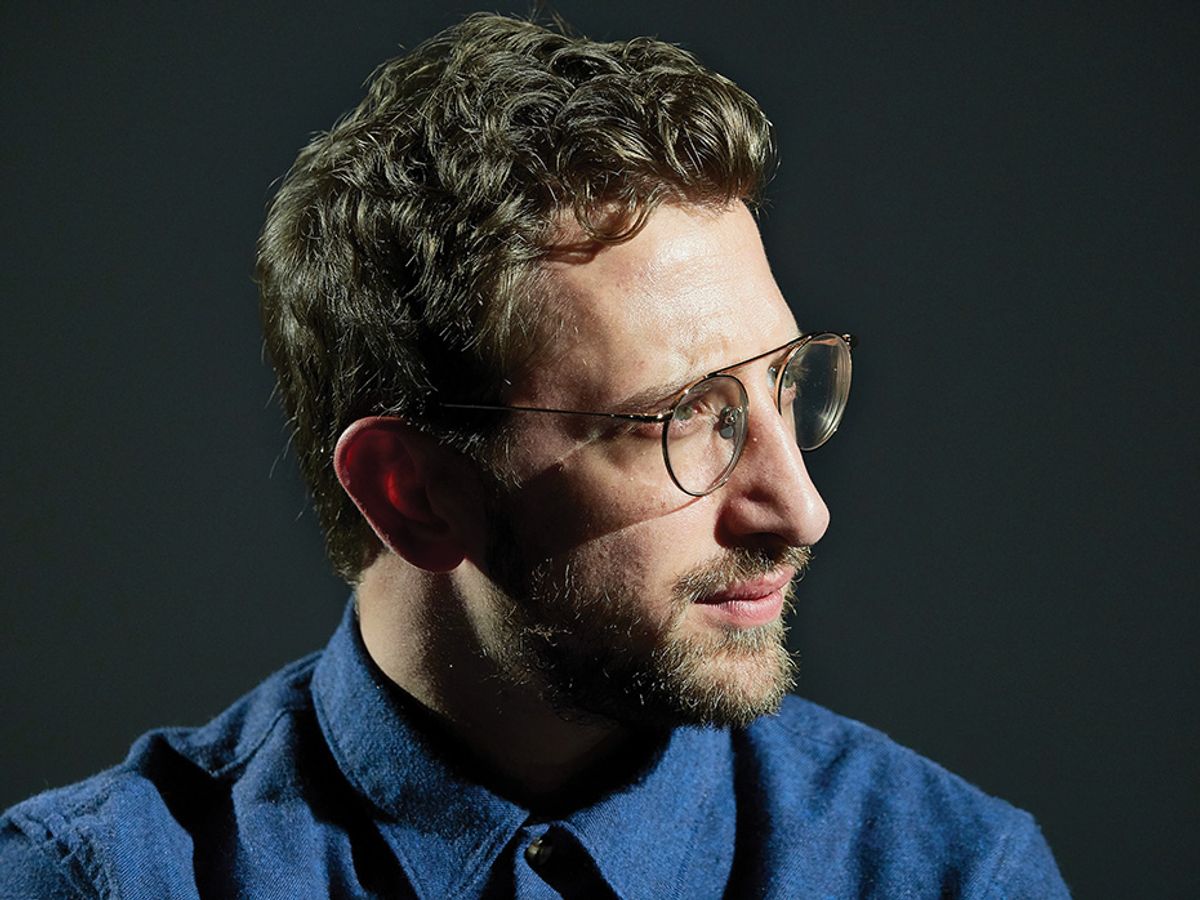Can we learn more about events from the sound of someone’s voice rather than the words that are said? This is a question explored by the Beirut-based, 2019 Turner Prize-shortlisted artist Lawrence Abu Hamdan, who recently spoke to The Art Newspaper over the phone from a London airport. He was born in Amman, Jordan, but cut his teeth as a teenager performing in an “underground scene of bands in Leeds” in northern England, where a DIY ethos and a close connection with the audience provided a “formative moment”, he says.
Abu Hamdan credits the British-Israeli architect and founder of the art collective Forensic Architecture, Eyal Weizman, with “really changing how I thought about the world”. Abu Hamdan is best known for work that explores and makes explicit the politics of sound and surveillance, whether it be the “ear witness” accounts gathered from prisoners tortured at Syria’s Saydnaya prison under Assad’s regime, or work critiquing the use of accent tests to validate asylum claims in Europe. A self-styled “private ear”, the research he has carried out with Forensic Architecture and Amnesty International has been used as evidence in immigration tribunals. His piece Walled Unwalled (2018), on show in the main exhibition at the Venice Biennale, focuses on cases in which evidence was obtained through walls.
At Art Basel, Abu Hamdan is showing the installation The Recovered Manifesto of Wissam [inaudible] (2017) in the courtyard of the Staatsarchiv as part of the fair’s Parcours programme, and his piece Earwitness Inventory (Script) (2019) is on display with Maureen Paley gallery.
The Art Newspaper: Can you tell us about the work you are showing at Basel as part of Parcours?
Lawrence Abu Hamdan: The Recovered Manifesto of Wissam [inaudible] (2017) is a work developed out of a longstanding investigation into the juridical concept of Taqiyya in Islam. Taqiyya is most often mistranslated as the right to lie, but in fact it’s a kind of legal dispensation that emerges from self-preservation. The most accurate way to translate it is: “to speak at the readiness of the other to listen.” Basically, it’s something that tries to reframe the voice from its relationship to truth. It’s trying to say that the voice—of all things—should be the last register of truth because we constantly reinvent ourselves when we speak. I’m speaking to you in a very distinct way than I would speak to the person who just checked me in at the boarding counter [at the airport].
How did you come up with the idea for the work?
It is actually a manifesto written [in English] by a person [called Wissam], which I found in a tree. It was a cassette tape that was wrapped around an orange tree to protect the fruit from being eaten by birds—a technique used in the mountains of Lebanon. I recovered as much as I could from the dictaphone tape, and I was left with this remarkable manifesto on the use and abuse of Taqiyya.
I came to Taqiyya through a kind of current technological moment and returned to it in order to explore and think about where these older theological and juridical concepts could sit in relation to trying to understand where we’re at today with surveillance and capitalism. Whereas before it might only have been on a witness stand or a police interview room, now, because of [surveillance] technologies, our voices are always being heard.
What form does the work take?
[The Recovered Manifesto] covers fake orange trees with cassette tape, and I have the recovered audio playing among this orchard of trees and tape. It’s a kind of diagram for understanding self-preservation, and in a way artificiality, by using the rights and emancipatory potential of being artificial. It’s sort of a monologue on how to use your voice to negotiate the politics of our time. It has a paradoxical feeling, where his voice is very forceful—and it really feels like a manifesto in that sense—but at the same time it’s heard in a sort of gossip or rumour-like environment.

The Recovered Manifesto of Wissam [inaudible] (2017) is part of Art Basel's Parcours programme © Lawrence Abu Hamdan; courtesy of Maureen Paley and mor charpentier
You describe yourself as an “artist and audio investigator”.
Yes, a “private ear”.
Do you differentiate between being an artist and being an investigator?
The “and” [in that phrase] is an important word. Why I say “private ear” is because, on the one hand it’s sort of like a bad joke, but on the other hand it is [a term] that I feel encompasses both things: the investigative side, but also this feeling of being independent in those investigations and forming your own conclusions, and developing the environments in which you can experiment with the conditions of how people understand a given event. For me [private ear] is a term that gathers both those practices together into one.
You have worked with Forensic Architecture and Amnesty International on research that was later used as evidence. Can you tell us about this?
There exists, all over northern Europe, a policy to check the accent of asylum seekers to see if where they come from is where they claim to actually come from. The whole thing is done in an incredibly unscientific and ridiculous way. It does not understand the fundamental conditions of the ways refugees and people who have itinerant lives live: often speaking multiple languages, often not having a single stable voice and accent because they’ve not really lived anywhere that is habitable.
[The voice is] not like a birth certificate or a passport; it’s more like a network, it’s somehow a register of everyone you have ever spoken to in your life. I was working with one Palestinian guy [who] was facing a deportation hearing based on the result of his accent test. I went to testify both personal knowledge of him and also about the research [I was doing]. I submitted an appendix to the report that was a work of mine called Conflicted Phonemes [2012] and The Freedom of Speech Itself [2012].
Do you think works of art have the ability to make a real difference? And should they strive to?
I’m not sure about the question of “difference”, but what I believe art does is it has its own way of producing claims and producing ideas in people’s minds that is distinct from the way that law and science make claims and statements. I think we can use our way of speaking—even if that comes from abstraction, hermeneutics or other forms—to re-argue and make claims that are perhaps counter to the ways in which we’re fixed. Art is a mode of truth-production distinct from other forms of truth-production.
Can you pinpoint how it is distinct from other ways of imparting information?
[Art] can think about things which are otherwise impossible to accommodate into legal arguments. For example, I worked on trying to argue that a whisper could contain as much information about a prison as the testimony itself. The actual sound of the whisper carried with it information about the violent conditions of that place, just as much as the descriptions of violence could. I think I was doing that quite convincingly in Saydnaya (The Missing 19db), shown at the Chisenhale Gallery [in 2018]. And I think that is something which, having worked with Amnesty International on the initial investigation of that project, could not be heard in the confines of human rights and the law and what constitutes testimony.
For me, the negative space and the idea of silence as substance, these are all ideas that have come through the writings of [John] Cage or works of abstraction. Whatever it is, we’ve come to those truths through the work of amazing artists.


